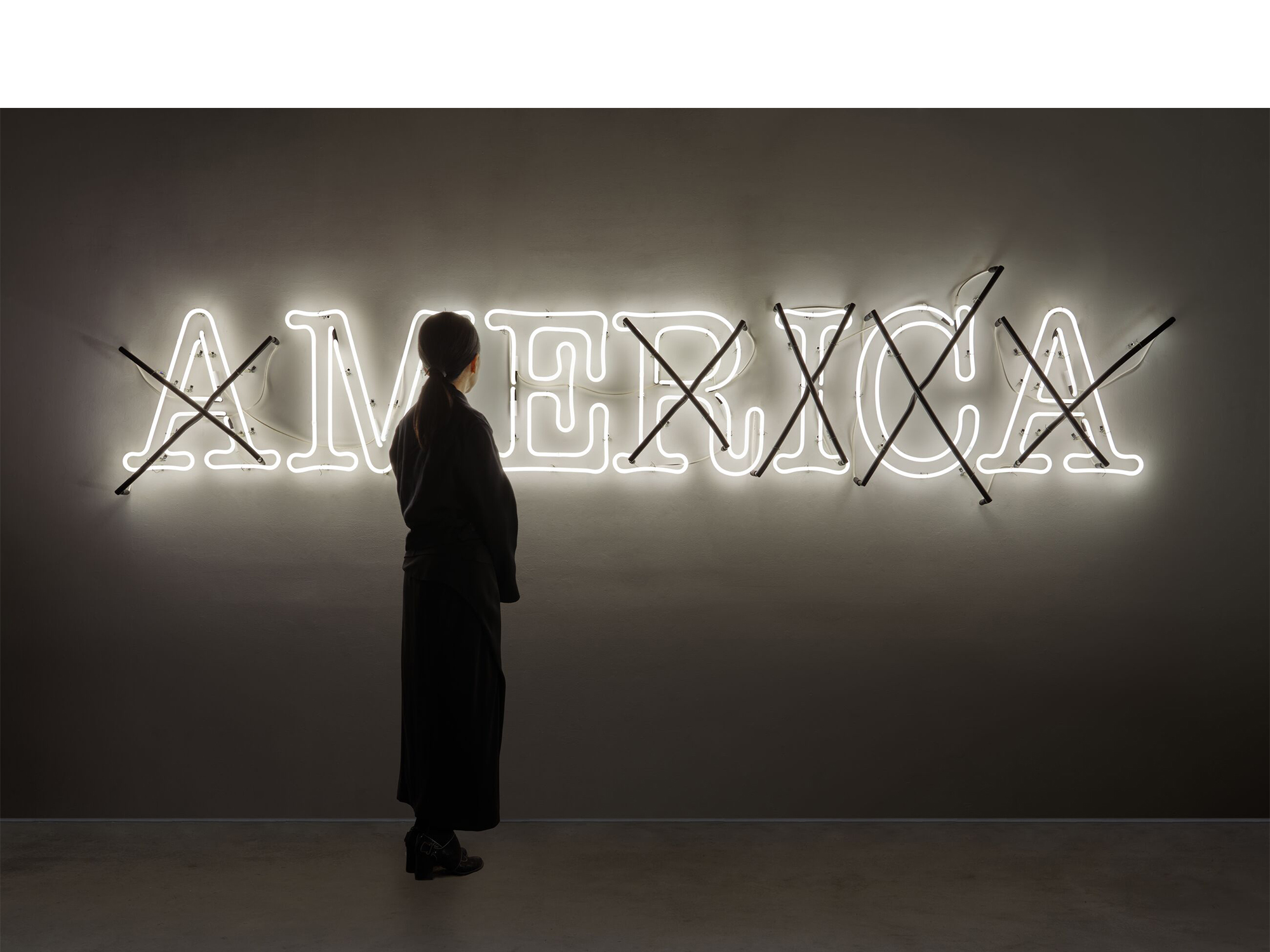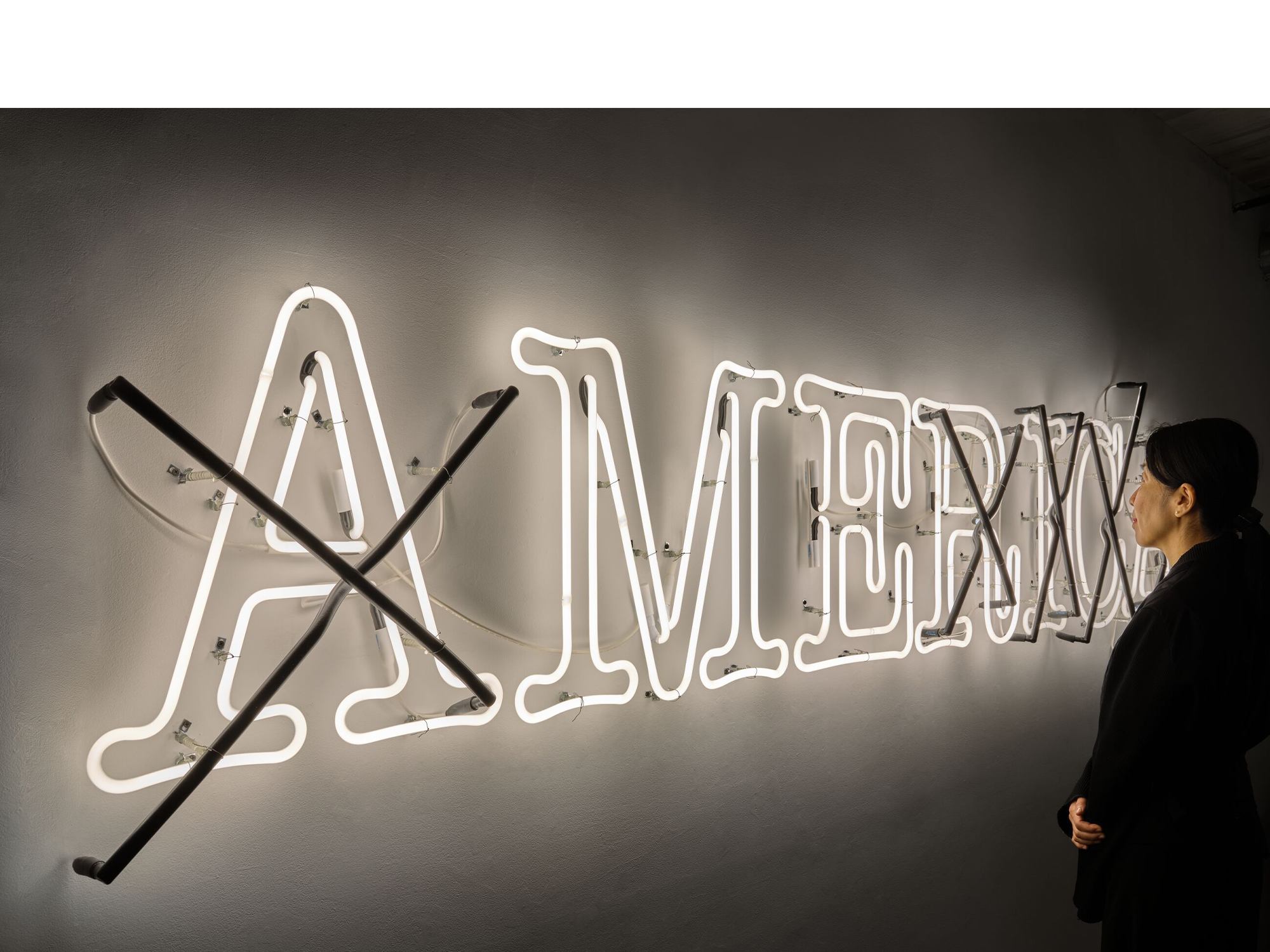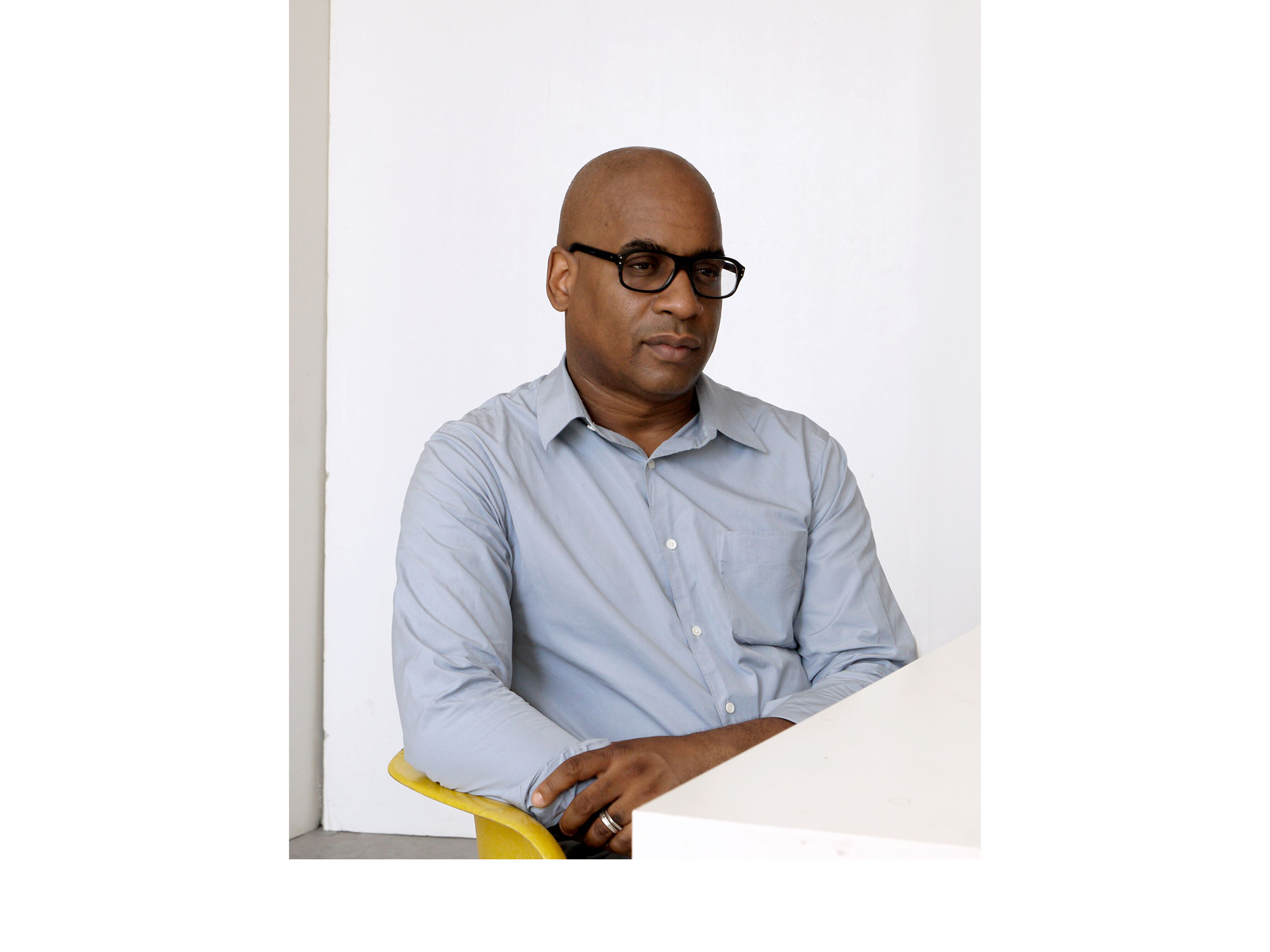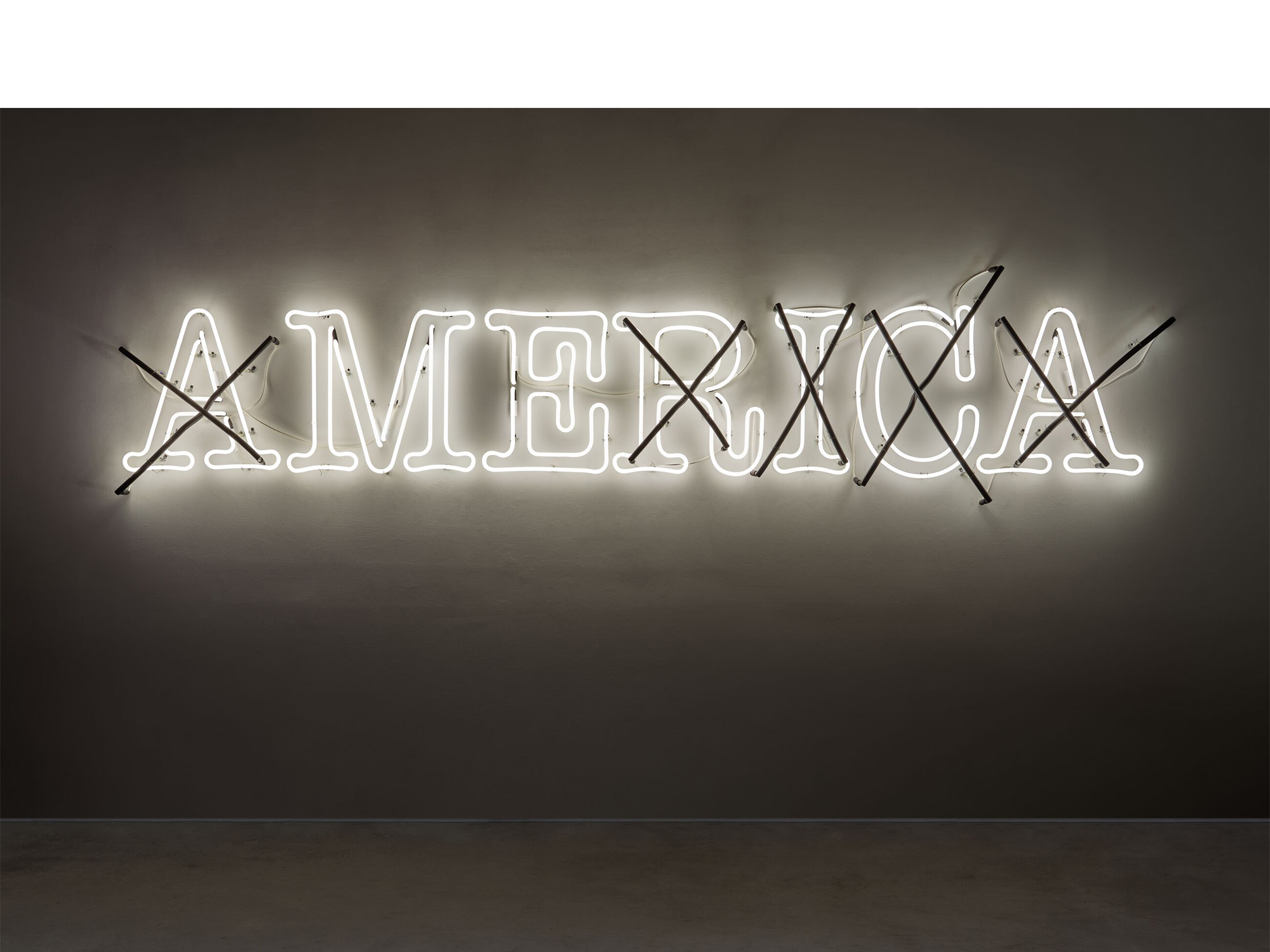Portrait of Glenn Ligon. Photo: Paul Mpagi Sepuya
All artwork images © Glenn Ligon. Courtesy of the artist, Hauser & Wirth, New York, Regen Projects, Los Angeles, Thomas Dane Gallery, London and Chantal Crousel, Paris. Photo: Thomas Barratt
1.) Glenn Ligon, ‘Glenn Ligon. Neon,’ New York: Luhring Augustine, 2012, p. 12.
2.) Glenn Ligon quoted in Whitney Museum of American Art, ‘Glenn Ligon. America,’ Youtuber, April 27, 2011, https://youtu.be/BiPk-rAZVV8 (accessed October 19, 2022).
3.) Scott Rothkopf, ‘Glenn Ligon. AMERICA,’ New York : Whitney Museum of American Art, 2011, p. 44.
4.) David Hammons, quoted in Glenn Ligon, ‘Black Light. David Hammons and the Poetics of Emptiness,’ Artforum (September 2004), p. 244.
5.) Scott Rothkopf, ‘Glenn Ligon. AMERICA,’ New York: Whitney Museum of American Art, 2011, p. 44.






 Born in the Bronx, New York, in 1960, Glenn Ligon received a BA from Wesleyan University in 1982. His early practice was grounded in painting, and his canvases of this period built upon the legacies of such Abstract Expressionist artists as Philip Guston, Cy Twombly, Robert Rauschenberg, and Jasper Johns. In 1984 – 1985, Ligon spent an academic year in the Whitney Museum of American Art’s Independent Study Program, developing a series of representational drawings of iconic sculptures by European artists such as Alberto Giacometti and Constantin Brâncuși, juxtaposed against images of African American hair products rendered in acrylic and ink.
Born in the Bronx, New York, in 1960, Glenn Ligon received a BA from Wesleyan University in 1982. His early practice was grounded in painting, and his canvases of this period built upon the legacies of such Abstract Expressionist artists as Philip Guston, Cy Twombly, Robert Rauschenberg, and Jasper Johns. In 1984 – 1985, Ligon spent an academic year in the Whitney Museum of American Art’s Independent Study Program, developing a series of representational drawings of iconic sculptures by European artists such as Alberto Giacometti and Constantin Brâncuși, juxtaposed against images of African American hair products rendered in acrylic and ink.




